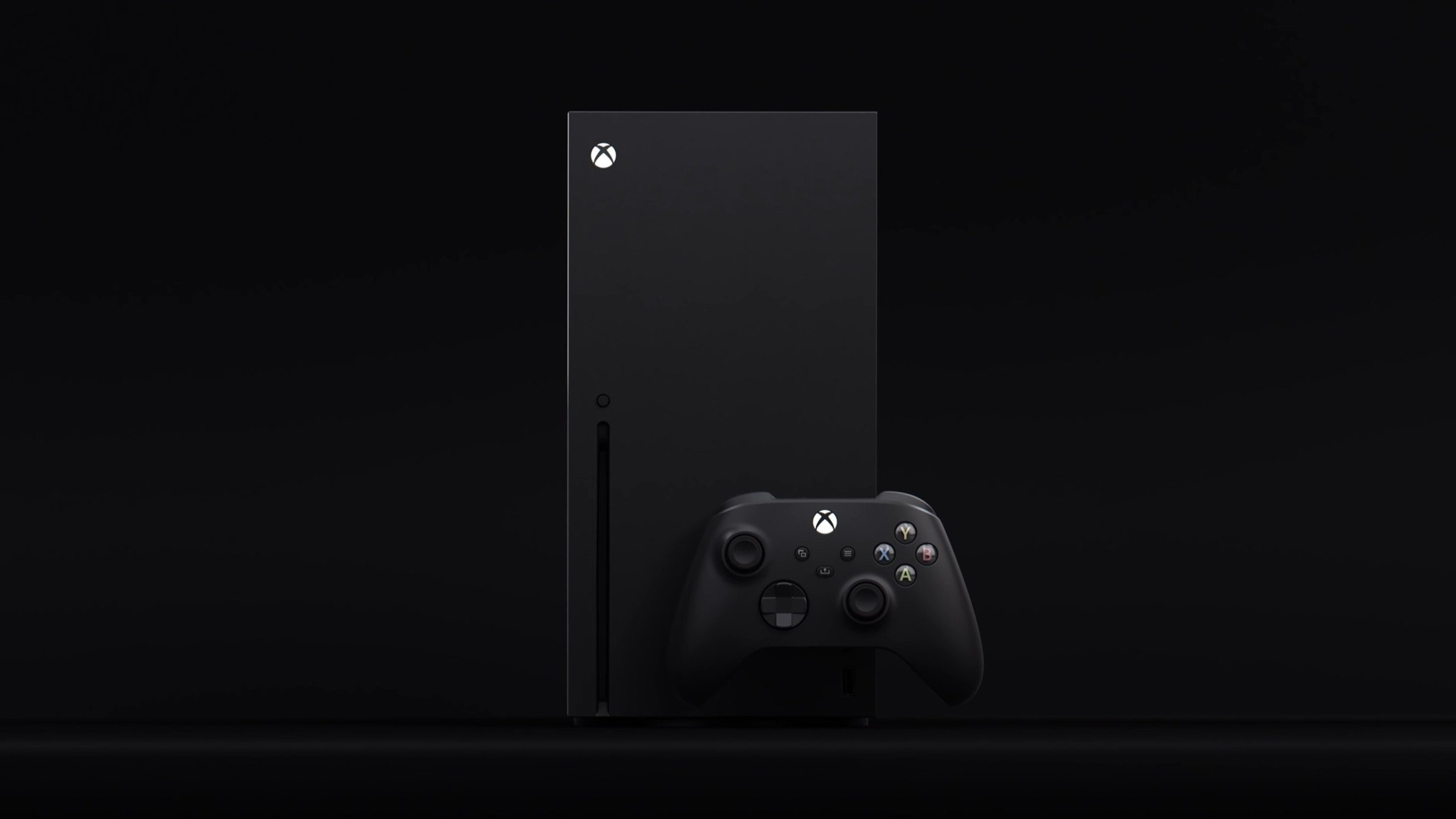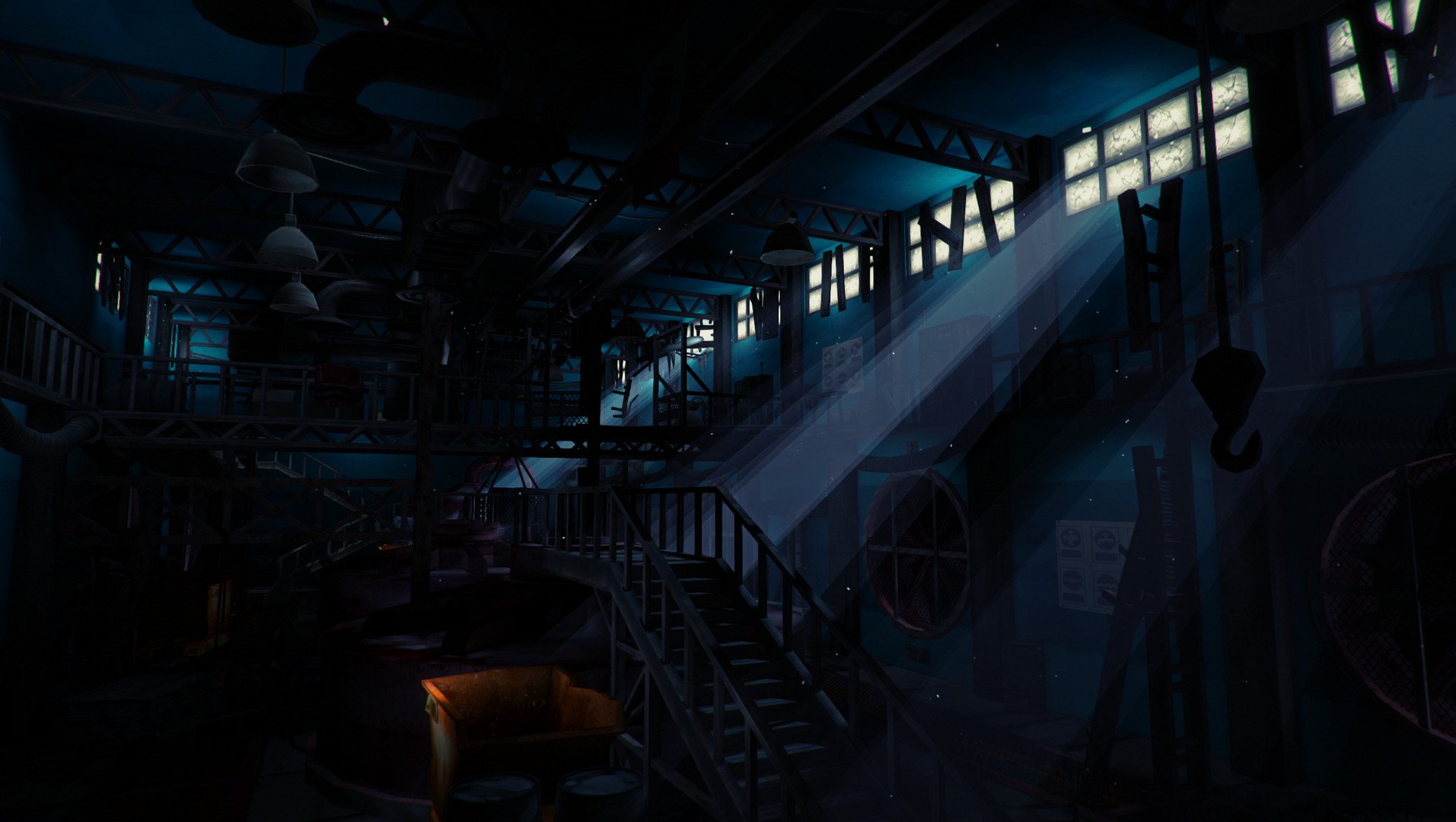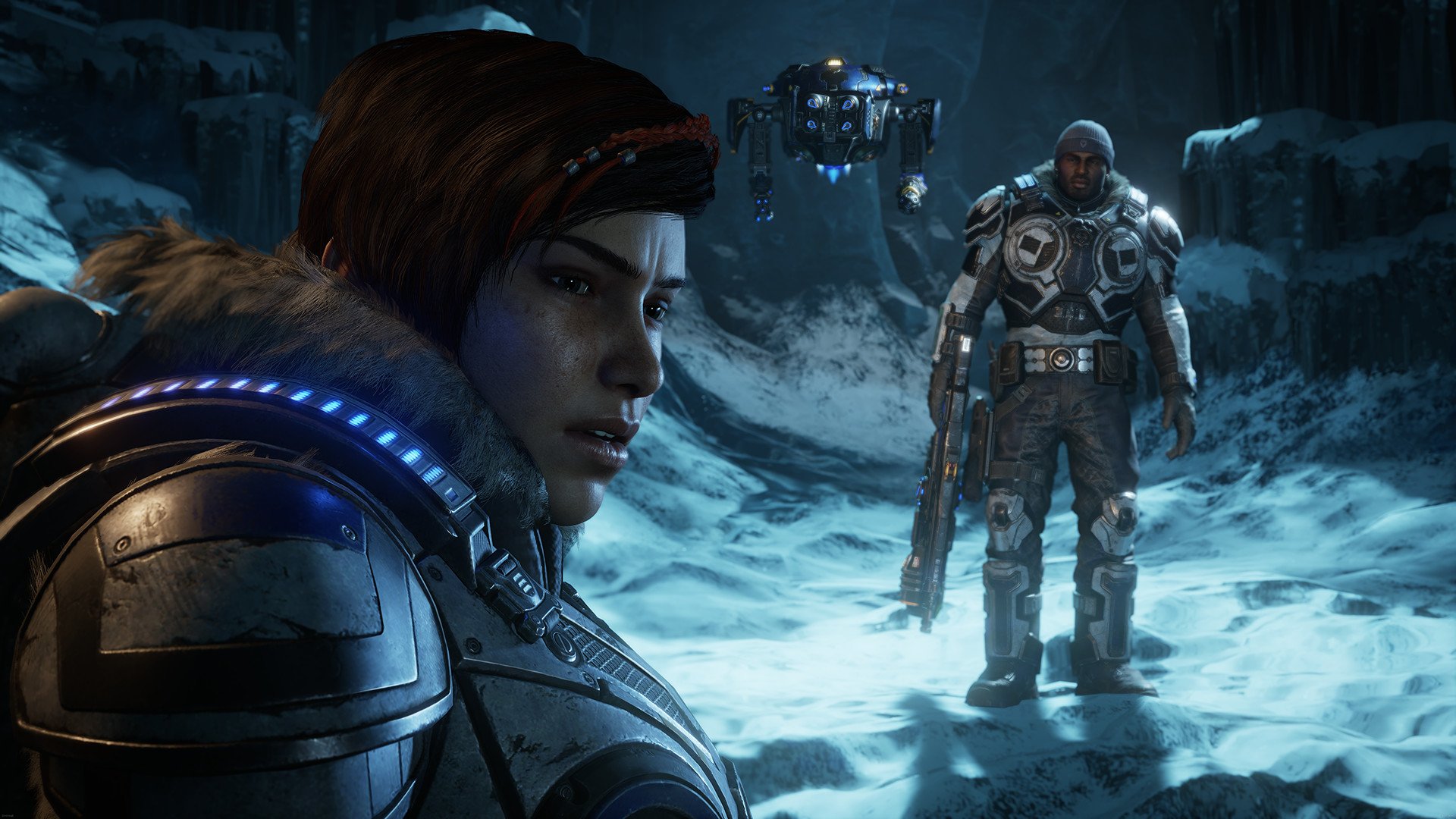Xbox Series X: What do game developers say about next-gen? We asked several for their thoughts.
The Xbox Series X is upon us. But what do game developers think of this next-gen beast? We spoke to several to find out their thoughts.

With the Xbox Series X and next-gen just months away, speculation about the capabilities of next-gen systems is heating up. As always, the proof is in the gaming, and we may not have to wait much longer to see what the Xbox Series X is truly capable of.
The sheer volume of technical wizardry, both from Microsoft's engineers and the game developers themselves, cannot possibly be understated. To that end, the raw specs of the Xbox Series X only tell part of the story, of course. We have new APIs, new developer tools, new graphics features, and various other improvements worth taking into consideration.
To get a better understanding of what that means for game developers and architects, we spoke to Microsoft and various third-party game devs to get their thoughts on what next-gen truly means for Xbox fans, and what aspects of the Xbox Series X are most exciting.
Xbox Series X
Jason Ronald, Director of Program Management for Xbox
To set the stage, Jason Ronald, who leads Program Management at Xbox, gave us some details on the thought processes that went into creating the next-gen Xbox Series X, putting game development at the fore. We asked Ronald what is the most significant potential game-changer for game developers on the Xbox Series X.
We knew with the next generation of Xbox, we needed to rethink and revolutionize the traditional console architecture to deliver consistent, reliable, and sustained performance never before seen in the living room with no compromises. Whereas past console generations have primarily been defined by increases in graphics innovation and performance, game developers' creative visions have become increasingly constrained by technical limitations such as I/O performance. With Xbox One X, we reached the upper limits of performance in traditional rotational drives. To unlock the creativity of developers to create transformative gaming experiences, we knew we needed to also invest in SSD level I/O speeds and innovation.This became the foundation for the Xbox Velocity Architecture, which comprises our custom-designed NVME SSD, a custom dedicated hardware decompression block, our new DirectStorage API which provides developers with direct low-level access to the NVME controller, and our innovative Sampler Feedback Streaming solution which acts as a multiplier of the physical memory in the console. The Xbox Velocity Architecture was designed to be the ultimate solution for game asset streaming, delivering a level of performance well beyond the raw specifications of the hardware, allowing developers to virtually eliminate loading times and enabling them to deliver even larger and more immersive, dynamic, living worlds for gamers to explore and enjoy."
The Long Dark
Joel Baker, Technical Director at Hinterland Games
Hinterland Games make the wildly popular survival game The Long Dark, set in the snowy reaches of post-apocalyptic Canada. Baker also cites NVME SSD tech, but also ray-tracing as being some of the more potent features of the Xbox Series X, with big benefits for weather effects and immersion on the horizon.
All the latest news, reviews, and guides for Windows and Xbox diehards.
The most exciting thing for me is the addition of an SSD and the custom hardware surrounding it to help get data into memory faster. This is not only going to allow for better streaming and load times but also make it easier to work with larger data sets that don't easily fit into memory. The addition of hardware ray tracing is also super exciting, but it's how it can be used outside of graphics that will enable the biggest changes.I can already see potential uses for it in games like The Long Dark, where we would be able to simulate physically accurate weather and wind by sending some rays into the world and then having the audio and physics change dynamically based on where the snow is accumulating or melting. These sorts of things are going to allow some really immersive experiences that weren't easily achievable before.
Ori and the Will of the Wisps
Gennadiy Korol, Director of Technology at Moon Studios
The Gennadiy Korol of Moon Studios, higher refresh rates are among the most exciting aspects of the new Xbox, finally accessible in a more affordable package. Gorgeous platformer Ori and the Will of the Wisps feels far more precise and satisfying at 60 FPS, and I personally cannot wait to (potentially) try it at 120 FPS in the future.
Playing games at a high refresh rate, at those crazy resolutions, is the next big thing in gaming. Anyone that played Ori and the Will of the Wisps in high resolution in 120 hertz will know what I mean. Previously this was only something that PC enthusiasts spending thousands of dollars on their machines would be able to experience. Bringing this kind of performance and quality to the general public is very exciting to me, and I think that will be the true next-gen leap we've all been waiting for.
Zombie Army 4, Sniper Elite
Kevin Floyer-Lea, Chief Technology Innovation Officer at Rebellion
Rebellion is known for the Zombie Army and Sniper Elite game series, the latter of which feature large detailed worlds (and amazing testicular sniper shots) at its core. Kevin Floyer-Lea who leads tech innovation for Rebellion is excited to be able to hit 4K 60 FPS as standard. Floyer-Lea also notes how the new hardware will improve long-range ballistics for Sniper Elite's industry-leading rifle gameplay, and how ray-tracing will actually enable more realistic sound-acoustics in addition to lighting, ideal for stealth games.
If you're in the business of making games, you're always excited about new hardware, and what it means for game development. First and foremost, the Xbox Series X is a genuine and significant boost in performance from the Xbox One. We saw how important both frame-rate and resolution were with the previous generation, so it's so exciting to be able to deliver 4K gaming at 60 frames per second on a console. Something that the Xbox One X offered was the ability for players to choose between resolutions and framerates, and we think giving gamers even more choice in this regard will be a good thing. The increased processing power means we will not only be able to offer silky-smooth gameplay for things like long-range ballistic mechanics with pinpoint accuracy, but we can actually take that gameplay up a level in complexity.Hardware-accelerated ray tracing is also a very welcome feature. Not only does it allow us to take players to environments that are that more realistic and dynamic, but ray tracing hardware can do more than just rendering! For example, we can do incredible things with the acoustics to enhance realism. Modeling realistic sound occlusion for AI's hearing in real-time, for example, is an incredibly useful feature for creating stealth games.The SSD storage speed then lets us take those beautiful realistic environments and make them load in a flash. And we're talking about bigger environments than the ones we could create on Xbox One.Finding new things to stream is an important part of this generation, and animation streaming is a game-changer for motion capture. Now we can support detailed motion capture on a much wider scale, like non-player characters simply doing their thing in the background. Instead of all enemy NPCs moving in an identical way, for example, the SSD storage speed means we can offer many unique motion-captured animations – and given we own Audiomotion, Europe's leading motion capture studio, it's something we'll be very keen to do.
Gears of War
Mike Rayner, Studio Technical Director at The Coalition
Gears of War's Mike Rayner at The Coalition also talked about how SSD speeds improve load times without any code changes, but also emphasized DirectStorage APIs and hardware decompression on the Xbox Series X as key factors in further improving loading speeds, while also liberating the CPU for performing other tasks. Rayner also discussed the potential for Sampler Feedback tech, which is part of the Xbox Velocity Architecture, which more efficiently loads textures based on what the scene needs, further reducing the load on memory.
We have come to expect generational leaps in CPU, GPU, and memory performance with each generation. Xbox Series X more than delivers against these expectations. As a game developer, one of the most exciting improvements that far exceeds expectations is the massive I/O improvements on Xbox Series X. In the current generation, as the fidelity and size of our worlds increased, we have seen download times and install sizes grow and increasing runtime I/O demands, which have made it challenging to maintain load-times expectations and meet world streaming demands without detail loss. The Xbox Series X has been holistically designed to directly address this challenge.With the Xbox Series X, out of the gate, we reduced our load-times by more than 4x without any code changes. With the new DirectStorage APIs and new hardware decompression, we can further improve I/O performance and reduce CPU overhead, both of which are essential to achieve fast loading. As we look to the future, the Xbox Series X's Sampler Feedback for Streaming (SFS) is a game-changer for how we think about world streaming and visual level of detail. We will be exploring how we can use it in future titles to both increase the texture detail in our game beyond what we can fit into memory, as well as reduce load times further by increasing on-demand loading to just before we need it, instead of pre-loading everything up-front as we would use a more traditional 'level loading' approach.
Dead by Daylight, Deus Ex HR Director's Cut
Alexandre Sabourin, Team Lead at Snowed In Studios
We took some comments from the team at Snowed in Studios, a team made up of industry veterans contributing to several projects such as Dead by Daylight and We Happy Few more recently, while leading many of the huge improvements we saw in Deus Ex Human Revolution Director's Cut in years past. Alexandre Sabourin is Team Lead over at the studio and offered some insights into how hardware-accelerated ray-tracing, improved processing power, and SSD boosts will help the Xbox Series X.
Ray-tracing will allow for more realistic and flexible art direction. There's a lot of research around raytracing that can be leveraged here that could lead to some very interesting concepts. Reflections, soft shadows, refraction, transparency. But all these operations have a cost. Raytracing hardware allows us to do some interesting things, but usually, production raytracers can take quite some time to converge to a reasonable image. The limit on samples per pixel means that there has been an interesting race to determine who can write an efficient denoiser. I'm interested to see what this new tech will lead to in terms of new research being done. Denoiser's are one interesting avenue, but maybe it will allow developers to write their own light mappers, or pre-render cinematics more effectively.What does it mean for game graphics? It means that developers are creating new ideas on how to use this tech, pushing the boundaries in a different direction than it's been pushed before.Processing power is always useful to allow developers to create more expansive worlds, more complex interactions, and to improve our ability to include more content into our games. It can also enable developers to spend less time optimizing and spend more time creating. Chip efficiency is also a big deal when it comes to the power wall. There comes a limit to how fast you can clock a CPU and how small you can make your transistors if operations require a lot of energy, then your chip needs more cooling to mitigate the damage. As a result, if you can reduce power consumption, you can increase the number of transistors you can fit on a chip. If you can reduce the cost of executing instructions, then you can increase your overall clock rate while maintaining your heat output. More instructions equal more "good."Hard drives have always been a hard constraint that developers have to deal with. SSDs provide some interesting benefits such as removing the necessity for seek times, which might provide flexibility in how you would pack data on disk. Of course, read times are also improved. SSDs can provide data significantly faster than HDDs can. This will help mitigate loading screens and improving our ability to stream large worlds more efficiently.
One massive generational leap
The leap to next-gen is going to be far bigger than what we got between the Xbox 360 and Xbox One systems, arguably, as the tech pushes beyond raw specs to enable greater creative tools across the board. NVME drives will enable more dynamic, more complicated worlds, with more varied and dynamic animations. Boosted hardware will enable physics-based lighting and reflections, rendered at higher resolutions and frame rates, far beyond what current-gen systems are capable of. Consoles getting access to NVME SSD speeds will also boost PC games, too, further liberating game development from having to account for outdated mechanical hard drives.
As always, the proof is in the gaming, and I don't think we'll have to wait much longer to find out what the Xbox Series X will be able to produce. The future of gaming is looking pretty bright right now.
Xbox Series X/S
Main
- Xbox Series X: Everything we know
- Best games coming to Xbox Series X/S
- List of Xbox Series X specs
- What is the Xbox Series X release date?
- How much does Xbox Series X cost?
- Why you can't preorder Xbox Series X yet
- Best Xbox Series X Headsets

Jez Corden is the Executive Editor at Windows Central, focusing primarily on all things Xbox and gaming. Jez is known for breaking exclusive news and analysis as relates to the Microsoft ecosystem while being powered by tea. Follow on Twitter (X) and tune in to the XB2 Podcast, all about, you guessed it, Xbox!







